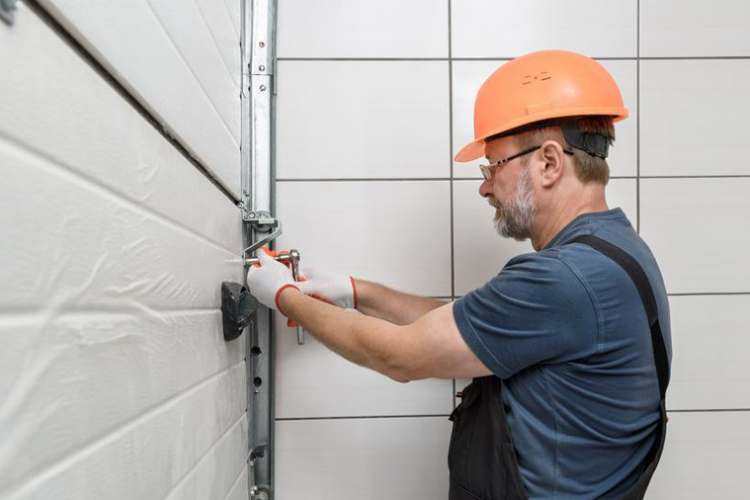Energy costs change throughout time, but with an overall higher trend, homeowners are constantly searching for new and innovative methods of garage door insulation to keep cooling and heating costs low. The garage, particularly the garage door, is an often investigated place. A garage linked to the house by one or more shared walls is clearly a source of energy loss; thus, appraising the garage makes absolute sense.
A home’s thermal envelope is often weakest near the connected garage door. Most houses’ garage doors open multiple times daily, exposing the majority of an entire wall to outdoor air.
Moreover, since a garage door functions this way, it isn’t easy to seal and insulate the garage. Unless the garage door is seldom utilised, any attempt to completely insulate the garage usually costs more in supplies than it saves in energy.
Even so, many assume that adding R-value insulation to the garage door is acceptable and essential. And in some instances, this may be accurate.
Garage Door Insulation Methods
Garage doors open and shut often, frequently hinged or folding in many places. Some types of insulation won’t stand the test of time while the door is in use. Insulation may be flaking or coming away. Suppose you need to try an insulating strategy as a short-term seasonal repair. In that case, you might want to consider using one of the usual garage insulation solutions listed below for your door:
- Reflective insulation: thin, rigid boards with heat-reflective foil; ideal for hot climates
- Foam board insulation: panels that have a high insulating value and are thin and stiff
- Fibreglass insulation batts: least expensive insulation; best used on the inside of the door
- Cellulose insulation: must be sprayed onto the garage door; it has much greater benefits than spray foam, but it is the most excellent option.
Why Is Garage Door Insulation Necessary?
Investing in insulation is a good idea; here are some reasons why garage door insulation is necessary.
They Are More Durable
Insulated garage doors for commercial and home use are built differently from single-layer ones, making them stronger. The frame is then filled with solid-core insulation and placed between dual or single steel panels. This building method produces a compact, energy-efficient door less prone to denting than previous uninsulated ones.
They Secure Personal Belongings and Vehicles
Insulated garage doors may also assist in keeping your vehicle safe. A car kept in a garage with an insulated door is much less likely to be exposed to cold temperatures. The lower the temperature, the less likely your vehicle will function properly. Because vehicle batteries are most dependable between 30 and 90 degrees, even opening the door can have a significant impact.
They Keep at a Comfortable Temperature
One of the most apparent advantages of insulation is that it may keep your garage warmer. If you spend considerable time in your garage doing DIY or other hobbies, you don’t have to cope with the unpleasant cold you’ll feel as you go from your warm home into the chilly garage.
Insulating the walls will assist in keeping the heat in and ensure that the temperature remains consistent throughout the year.
They Save Energy
Garages are one of your home’s least energy-efficient areas. Garages often feature conditioned rooms above them and a door that links directly to the house. Moreover, you may save electricity by adding insulation to your residential garage door. Lowering the temperature in the garage saves energy that you would otherwise use to heat the rest of your home.
They Are Quieter
Uninsulated garage doors are often quieter than insulated garage doors. You should grease every six months for optimum functioning, roller bearings, tracks, and hinges. You can resolve most noise issues with routine maintenance. If your garage door produces a lot of noise, you should consider noise reduction methods.
Kits for Garage Door Insulation
If the garage will be employed as a living space, another alternative is to insulate the door using a garage insulation kit offered at home improvement stores. In most cases, two types of kits are offered. A carton of vinyl-faced fibreglass batting provides r-8 insulation to the door; two containers will cover a conventional 16-foot-wide garage door.
Furthermore, this form of soft insulation is applied to the inside of the door using tape. Another method is purchasing and attaching EPS (precut expanded polystyrene) rigid foam panels to the door. After being cut to the appropriate length, the panels are snapped into place in the space created by the door panel’s horizontal rails. This sort of kit has an insulating value of around R-4.
If you use your garage to keep cars and other stuff, you’re usually better off keeping the door open instead of insulating the garage ceiling and sharing walls with the house. If you utilise your garage as a living area, it’s worth your time for garage door insulation and other garage components. Consider both your requirements and your lifestyle before making a choice.

